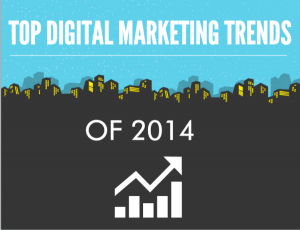
The changing face of America’s workforce
The United States isn’t just one of the largest hubs for the use of contingent labor, it’s also one of the most diverse nations — culturally, racially and economically — in the world. In just a few years, analysts anticipate minority populations to become the majority. Immigration is a primary factor: the U.S. government expects 820,000 immigrants to arrive annually, and two out of three, or about 67 percent, will have reached working age when they land. By 2050, according to estimates, the Hispanic population will grow by 167 percent, with Asians following close behind at 142 percent. And we can’t discount all the other unique and emerging attributes that will shape the composition of the country: gender and gender identification, ethnicities, religions, sexual orientation and more.
As we predicted in January, 2015 is poised to become the year of diversity. Building the workforce of tomorrow requires embracing and cultivating a business culture that brims with varying perspectives. Yet according to Oxford Economics’ Workforce 2020 report, only 35 percent of workers polled around the globe said their companies exhibited a firm commitment to diversity, which was considered part of a “looming talent crisis” by the authors of the study.
Given the shifting demographics in the country, corporations want to bolster the diversity of their teams, yet many struggle. The stark reality of the situation — a continuing imbalance in majority and minority workers — is made even clearer with the rise of big data. “The problem is so bad,” Leo King of Forbes wrote, “that one entrepreneur has developed a software tool directly aimed at giving them the lowdown on their problems, and an exact system for urgently and sustainably doing something about it.”
For years, businesses have turned to MSPs as experts in fulfilling diversity initiatives. Many MSPs are themselves certified diversity enterprises. And they have demonstrated a tireless dedication to cultivate networks of diverse suppliers, and talent, to bring their clients the fresh perspectives, robust cultures and new ideas that spring from heterogeneous workforce populations. It’s a common trend that companies that embrace diveristy perform better. So let’s first look at how MSPs help organizations become masters of diversity, and then examine how a new software tool can help them drive these efforts to new heights.
MSPs: Masters of diversity
MSPs actively seek out, recruit and mentor small, local, disadvantaged, veteran, minority and women-owned suppliers to assist clients in reaching their diversity goals. The nature of an MSP solution provides these staffing partners with an equal opportunity to participate in major contracts without having to invest in the resources or technology normally required for a relationship with large, decentralized companies. To capitalize and expand on their efforts, most MSPs also ally themselves with recognized councils, community outreach groups and others to identify diverse providers. Some examples include:
- National Minority Supplier Diversity Council (NMSDC)
- Women’s Business Enterprise National Council (WBENC)
- State supplier development organizations and local affiliates
- Small business incubators
- Local chambers of commerce
By capitalizing on their supplier mentoring capabilities, MSPs assist diversity staffing vendors in developing their recruiting networks, community alliances and professional associations to build a bench of exceptional and diverse talent to support the program. MSPs can also help showcase their clients’ organizational opportunities to targeted diversity suppliers through event planning and participation, automated sourcing, data mining and more.
To achieve a client’s diversity spend goals, most MSPs have developed methods for seeking out and engaging diversity suppliers. Some best practices of leading MSPs follow.
- They create internal supplier diversity departments or advisory bodies to lead the efforts in recruiting minority, women-owned, disadvantaged and veteran business enterprises (MWDVBE).
- After sourcing and engagement, MSPs continue to manage supplier relationships and help them mature their diversity initiatives.
- Many MSPs establish membership in official associations and groups that provide access to a wide array of diversity vendors, allowing them to approach and engage certified suppliers through those organizations.
- MSPs frequently participate in diversity supplier functions, such as Business Expos, Trade Fairs, Opportunity Luncheons and others.
- They build networks of qualified diversity suppliers and maintain a unique registration process for these staffing partners when they enter the program. This approach allows MSPs to pre-screen suppliers for diversity status. It also facilitates the tracking of performance and spend related to diversity objectives, often through the VMS.
- MSPs collaborate with clients to identify existing and/or preferred diversity suppliers as a routine part of the discovery process for implementation. After, they develop strategic plans for inclusion, engage additional diversity suppliers for augmentation, and secure a documented commitment from the client’s leadership to support these goals.
- They engage client staff who have control over corporate purchasing, which helps improve the success rate when striving to achieve specific annual goals for acquiring labor from diversity-owned businesses.
- MSPs collaborate with clients to promote visibility of the diversity initiative on the corporate website, including program details, contacts and a list of services needed (e.g., specific job categories of workers, etc.).
New technology platform can strengthen the MSP’s influence
The VMS tools used by MSPs today have diversity considerations built into their standard programming. And yet determining the client’s existing level of workforce diversity during implementation is often a vague, challenging hunt for data that may not exist. And when such information is present, analyzing it can be equally difficult. That’s where a new product by the consultancy Culture Shift Labs may help MSPs and their clients.
The software is called Katapult, and its creators describe it as “Salesforce meets LinkedIn, meets diversity.” Although Andrea Hoffman, the founder of Culture Shift Labs, points to the IT and banking sectors as examples of industries facing serious struggles with diversity, she noted that “most” companies still have trouble employing a diverse workforce.
Katapult targets companies with an existing diversity strategy. Once in place, the tool performs a comprehensive analysis to gauge the organization’s true diversity status. It relies on predictive analytics to develop a strategic plan that covers the business, the workers and the means for reaching the marketplace. Katapult then recommends the best ways to use resources toward the success of the program.
As Forbes observes, “So many companies struggle to have a workforce that reflects the diversity of their community and customer base. With the opportunities to vastly improve their sales and their breadth of ideas, many are slowly beginning to take it more seriously.”
Driving diversity further
Companies that have outsourced their workforce management to MSPs have already taken the concept of diversity to heart. And with tools like Katapult entering the game, a new level of visibility and attention is being born. This kind of software has the potential to elevate an MSP’s already strong diversity solution: it delivers a much clearer picture of diversity status upfront, it forecasts needs, it helps build the business case for specialized supplier engagement, and it can expedite an MSP’s strategy through access to data that clients may lack. Armed with this information, and enriched by the robust reporting capabilities of a VMS, MSPs can help their clients realize even greater diversity goals.
(214)










